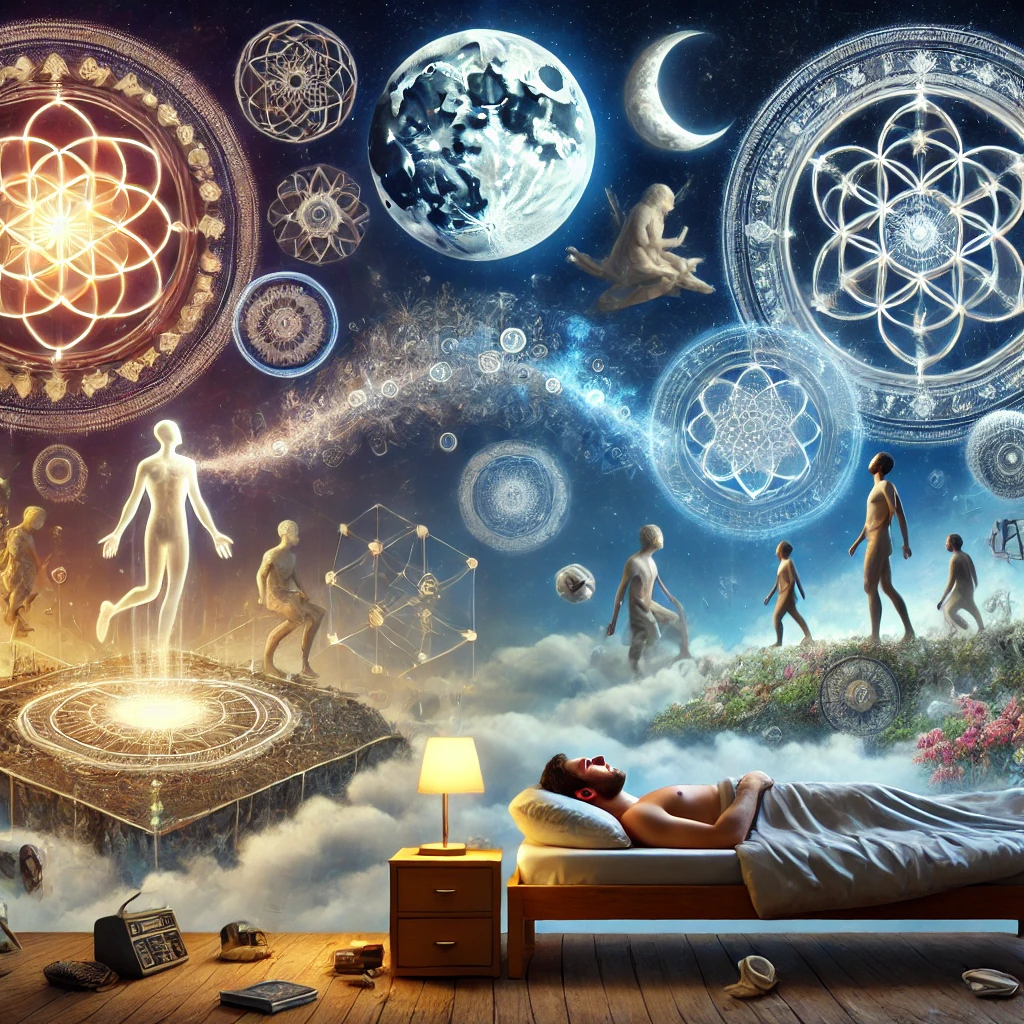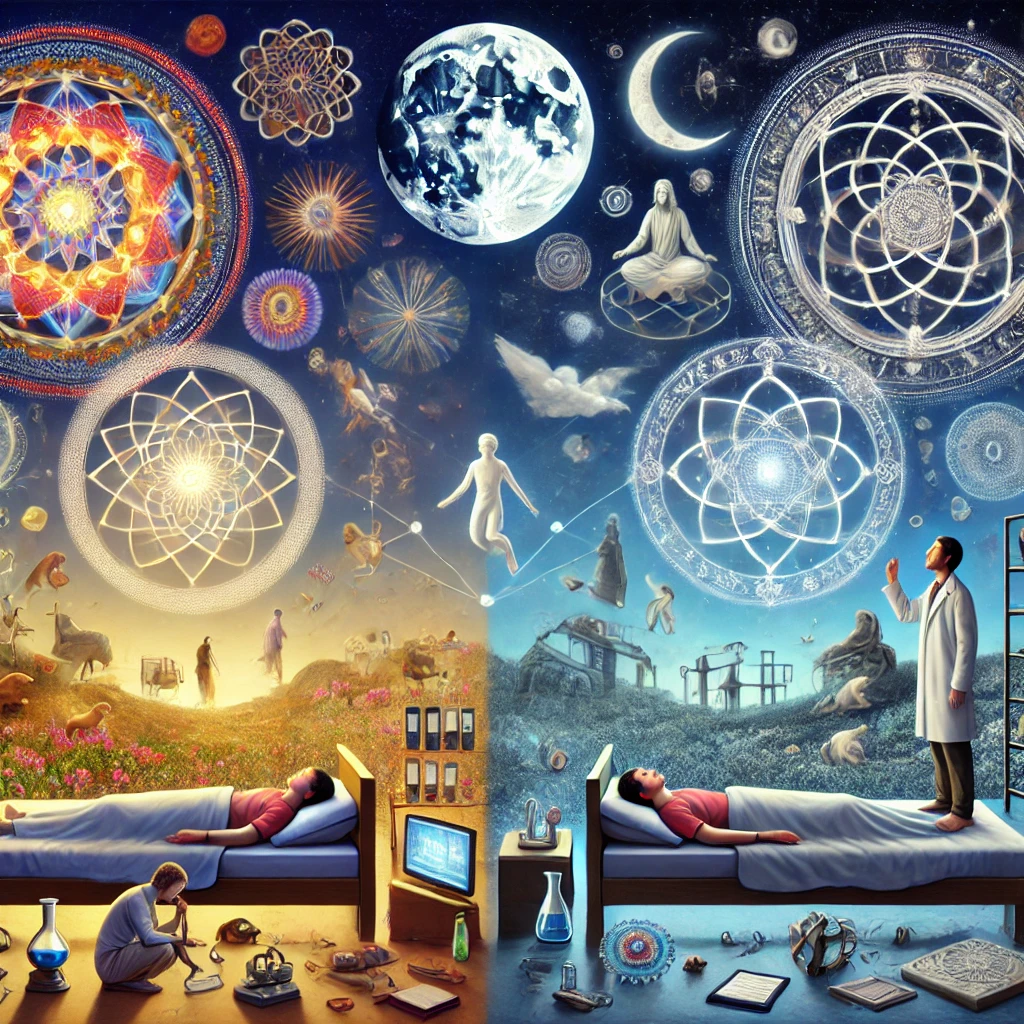Jung and Invidia:

Introduction
In the realm of psychology and dream interpretation, Carl Jung’s approach offers profound insights that continue to resonate with modern thinkers. His method of depth psychology contrasts starkly with the laboratory approaches favored by contemporary scientists. Understanding why Jung’s approach to dreams remains relevant and influential can provide invaluable perspectives on the unconscious mind. This exploration is essential for three primary reasons: it bridges the gap between scientific and introspective methodologies, it enhances our comprehension of the human psyche, and it fosters a deeper connection with our innate instincts and nature.
Why Study Jung’s Approach?
- Bridge Scientific and Introspective Methods: Jung’s approach harmonizes the analytical with the introspective, offering a comprehensive understanding of the psyche.
- Enhance Psychological Comprehension: By delving into the unconscious, we gain deeper insights into human behavior and mental processes.
- Foster Connection with Nature: Jung’s theories reconnect us with our instincts and the natural world, promoting holistic well-being.
Jung and Invidia:
The Concept of Invidia
Anthony Stevens delves into the ever-recurring conflicts that occur when people divide themselves into “in-group” and “out-group” categories, a phenomenon termed “Invidia” coined by Leon Daudet (Stevens, 1996, p. 83). This division is pivotal in understanding why contemporary scientists often dismiss Jung’s theories, yet depth psychologists fervently support them. The challenge lies in deriving holistic meaning from parts that we both identify with and reject, which Jung believed was crucial for true understanding.

The Primacy of Introspection
Scientific Parallels and Divergences
Jung’s theories, although often dismissed, align with later scientific hypotheses. For instance, Stevens notes that Winson and Jouvet don’t even acknowledge Jung, even though their hypothesis aligns with Jung’s dream theory of compensation (Stevens, 1996, p. 97). Furthermore, Jung intuited concepts akin to Paul MacLean’s Triune Brain theory, suggesting that dreams involving mammals and reptiles relate to corresponding brain structures (Stevens, 1996, p. 97). Despite these parallels, the natural process of Invidia places Jung on the periphery of mainstream scientific thought, while scientists remain central. Healing this split remains our task to achieve a full and comprehensive understanding of dreams.
Allegiance and Archetypal Splits
The allegiance phenomenon, as Jung observed, mirrors the Christ-Satan archetypal split within our psychology. The “in-group” represents Christ-like qualities, treated with loyalty, while the “out-group” embodies the Satanic elements, relegated to the shadow and met with hostility (Stevens, 1996, p. 83). Swearing allegiance to truth rather than scientists or Jung would help create a better understanding of both while giving due diligence to each party’s points. Jung’s dedication to truth over allegiance to any particular group or idea underscores his unique approach. He says that people accuse him of demonology because his views correspond with the views of primitives. However, what scientists fail to realize is that he doesn’t disregard their perspectives either. Jung employs the scientific method in all his theories, but the phenomenon of Invidia keeps scientists in their camp and Jung in his.
The Unconscious as a Source of Insight
Jung valued introspection over laboratory methods because dreams reveal the instincts and primitive levels of nature that the conscious mind often overlooks (Stevens, 1996, pp. 107-108). By paying close attention to our dreams, we can reconnect with our natural law of being and transform the divided group wholes into a unified individual whole.
The Fourth Dimension, Symbolic Images, and the Spirit
The idea of balancing our three-dimensional existence with the fourth dimension of dreams that goes beyond space and time, represented by symbolic images, as discussed during a dinner conversation by Jung and Einstein, invites us to reconsider our understanding of the spirit. I don’t think their conversation went very far from Jung’s end; he said he felt small compared to Einstein.
Anyhow, whichever way the spirit is viewed, be it as a collective presence or the philosophical essence, the spirit in dreams might represent the timeless and non-spatial self, the center and circumference of our being. Could this suggest that our spirit in this three-dimensional realm is balanced at night in our dreams?
It depends on how you define spirit. Do you see a spirit as a ghostly and airy presence? Do you see it as something collective, as in we all meet for a webinar later today in a certain spirit? The spirit of Jung? There is also the alchemical notion of the spirit, where the spirit or alcohol of grapes is the wine on the vulgar level, and on the philosophical, the spirit is the mind of something.
The interesting thing about the dimensionality of reality is that the problem of three and four is always present and necessary. In time, you have three elements: beginning, middle, and end. The missing fourth piece to the puzzle is space. The beginning, middle, and end occur in space. For space, there is height, width, and length, with the missing piece being time. What dimension and what kind of time is occurring in the dream? Just to tie it back to the spirit, perhaps the spirit, depending on how you define it, is that non-spatial and timeless entity we call the Self, The Purusha, that is everywhere and nowhere, the center and the circumference.
Navigating Modern Alienation
Introversion and Extraversion in the Digital Age
In today’s digital age, the distinction between introversion and extraversion has become blurred. The constant shifting between introversion and extraversion isn’t limited to the social versus solitary life dichotomy. Introversion involves matching something private to the subject—your internal image close to the archetypes. Extraversion involves merging with the object, sharing that experience, and being on the same page. The paradox now is that we are solitary with our devices but share and merge with the outer world from our interior world. This dynamic doesn’t provide much information about our interior life except for our insecurities and vulnerable narcissism.
Your example of appreciating beauty shows how you use introversion and match what you see outside with your internal image. You derive energy from it because it’s closer to the archetype. With platforms like Facebook, we seem to become more alienated rather than connected to the archetypes, creating a type of anxiety we’re not sure how to address. We are glued to our devices because we crave love and mirroring. The myth of Narcissus, who fell in love with his reflection and perished, “mirrors” our current predicament. Similarly, our global culture faces a crisis of alienation, losing touch with nature and genuine human connection as we become more introverted into our timeless technological world, forgetting how to merge and share our experiences in time and space, which can provide the love that many people desperately crave and need.
The Red Book and the Ego-Self Axis
The question we are always investigating through the depth psychological approach is what is the trajectory of this thought, feeling, emotion, desire, etc.? Where is it coming from? The best we can do is to be honest and neutral, using self-examination through reflection or paying close attention to our dreams. Jung took note that his trajectory of thought wasn’t the mainstream, but he didn’t go upstream either to overly defend himself. Instead, he continued with the flow of his ideas, inspiration, and guidance downstream, benefiting those of us who love and appreciate his wisdom.
As for the Red Book, it’s amazing how one man can create so much content that remains to be unpacked. Perhaps we should all be working on our own form of the Red Book. That would either create a better world or a more narcissistic one. I think narcissism is inevitable at this point, no matter what we do. Our lives seem to be funneled and structured to head in that direction.
Why does the East advocate a non-ego or self-oriented attitude? Perhaps they were in touch with the nature of the unconscious as presented by the dream world. Jung says there is no ego in the dream and that the dream is a psychology of the unconscious. If the dream is pure nature, then nature must not have any ego. Therefore, being one with nature requires no ego. However, since our lives are structured towards more ego, the ego-Self axis is the reality to be built—or rather unlocked because it is already built into us. If we ever hope for redemption, we need to hold both paradigms (ego and non-ego) in mind.
Ego and Non-Ego Paradigms
Jung’s exploration of the ego and the unconscious highlights the balance needed between ego-driven actions and the ego-less nature of dreams. Integrating both paradigms can lead to a more holistic understanding of the self and potentially redeem our fragmented psyche.
Comparison Table: Jungian Ideas and Eastern Esoteric Concepts
| Jungian Ideas | Eastern Esoteric Concepts |
| Invidia | Duality of Yin and Yang |
| Archetypal splits (Christ-Satan) | Dualistic Nature of Reality |
| Introspection and dreams | Meditation and Inner Reflection |
| Compensation theory in dreams | Karma and Reincarnation |
| Connection to primitive instincts | Alignment with Prana or Chi |
| Ego vs. Non-Ego | Self vs. No-Self (Anatta) |
Conclusion
Jung believed his method of introspection was more useful than laboratory work because dreams allow the unconscious to reveal more than the conscious mind can. Exploring Jung’s approach to dreams offers profound insights into the human psyche, bridging the gap between scientific and introspective methodologies. This is because dreams give expression to instincts and the primitive levels of nature. And by understanding the phenomena of Invidia and the archetypal splits, we can appreciate the depth of Jung’s theories. His emphasis on introspection and the unconscious connects us to our innate nature and transforms our understanding of self and spirit. This exploration not only enriches our psychological comprehension but also fosters a deeper connection with our true essence. When we pay close attention to our findings in dreams, we can reconnect with our natural law of being and transform the divided group wholes resulting from Invidia into the unified whole present eternally in the individual (Stevens, 1996, pp. 107-108).
Resources
Childrens Dreams: Notes from the Seminar Given in 1936-1940. (n.d.). Retrieved from JSTOR.
Stevens, A. (1996). Private myths: Dreams and dreaming. London: Penguin.
Dreams, a Portal to the Source, pages. 26-55; chapters 4 and 5.
Additional optional readings:
- Dream Science, a chapter from the book Private Myths by Anthony Stevens.
- The Science of Dreaming, summary excerpts from the book Dream Language by Robert Hoss.
- The Role of Dreams in the Evolution of the Human Mind, an Evolutionary Psychology paper.
- Aristotle’s Theory of ‘Sleep and Dreams’ in the light of Modern and Contemporary Experimental Research by Christina Papachristou.
- Dream States, a magazine article by neuroscientist and researcher Christof Koch.
- Understanding Sleep and Dreaming, a full book on dream science by William Moorcroft.
Responses